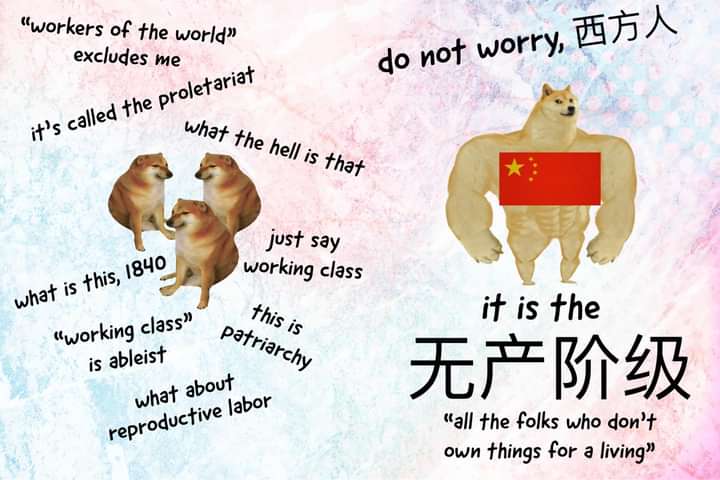this post was submitted on 28 Jun 2024
57 points (98.3% liked)
languagelearning
14166 readers
1 users here now
Building Solidarity - One Word at a Time
Rules:
- No horny posting
- No pooh posting
- Don't be an ass
founded 4 years ago
MODERATORS
you are viewing a single comment's thread
view the rest of the comments
view the rest of the comments

my friend your language has twelve fucking tenses
This doesn't even include counterfactuals (I would have played tennis, but...)
Anyway the way this is done in Chinese is as follows (not going to pretend to be an expert, this is a newbie explaining things to other newbies): consider the phrase "Yesterday, I played tennis". English is a high-entropy language in the sense that it has a lot of redundancy. Here, the verb conjugation "played" is redundant; the "ed" confers no additional information since it is already clear we are talking about the past from the use of "Yesterday". In Mandarin the direct translation of this sentence would be "Yesterday I play tennis" or "Zuótiān (yesterday) wǒ (I) dǎ (play) wǎngqiú (tennis)". If you just want to talk about things in the generic past tense you use the le particle, so "I played tennis" would be "wǒ (I) dǎ (play) le (past-tense modifier) wǎngqiú (tennis)".
My problem is the hard-to-remember symbols, learning words from a different lang is easier if said words are made up combining not so many letters
Well, Chinese characters are usually composed of not-so-many sub-symbols (moreso in traditional Chinese than simplified). Usually they have one symbol telling you how the word is pronounced, and another telling you conceptually what the word has to do with; for example, consider "māmā" (mother) which is written 媽媽; on the left of each character is the symbol for woman (女) and on the right is the symbol for horse (馬), which is pronounced mǎ - different tone, but same sound. You can also notice that both of these symbols kind of look like a minimalist artistic depiction of their subject.
One interesting thing to think about - borrowing from Dan Dennett's presentation of language evolution here - the language's symbols are curiously easy to remember, which makes sense if you consider that writing as a form of information reproduction is subject to selection pressure. If a symbol is hard to remember then it will not be as easy for people to write it (reproduce it) without errors. So the symbols comprising the language corpus tend to slowly evolve into more easily-remembered forms as people write them and read/copy from others' writings. Before learning Chinese I thought as you did, that it would be easiest to just have a small number of characters making up each word. But it really is surprisingly easy to remember characters, for reading purposes at least!
so mother is written "mare - mare" lol